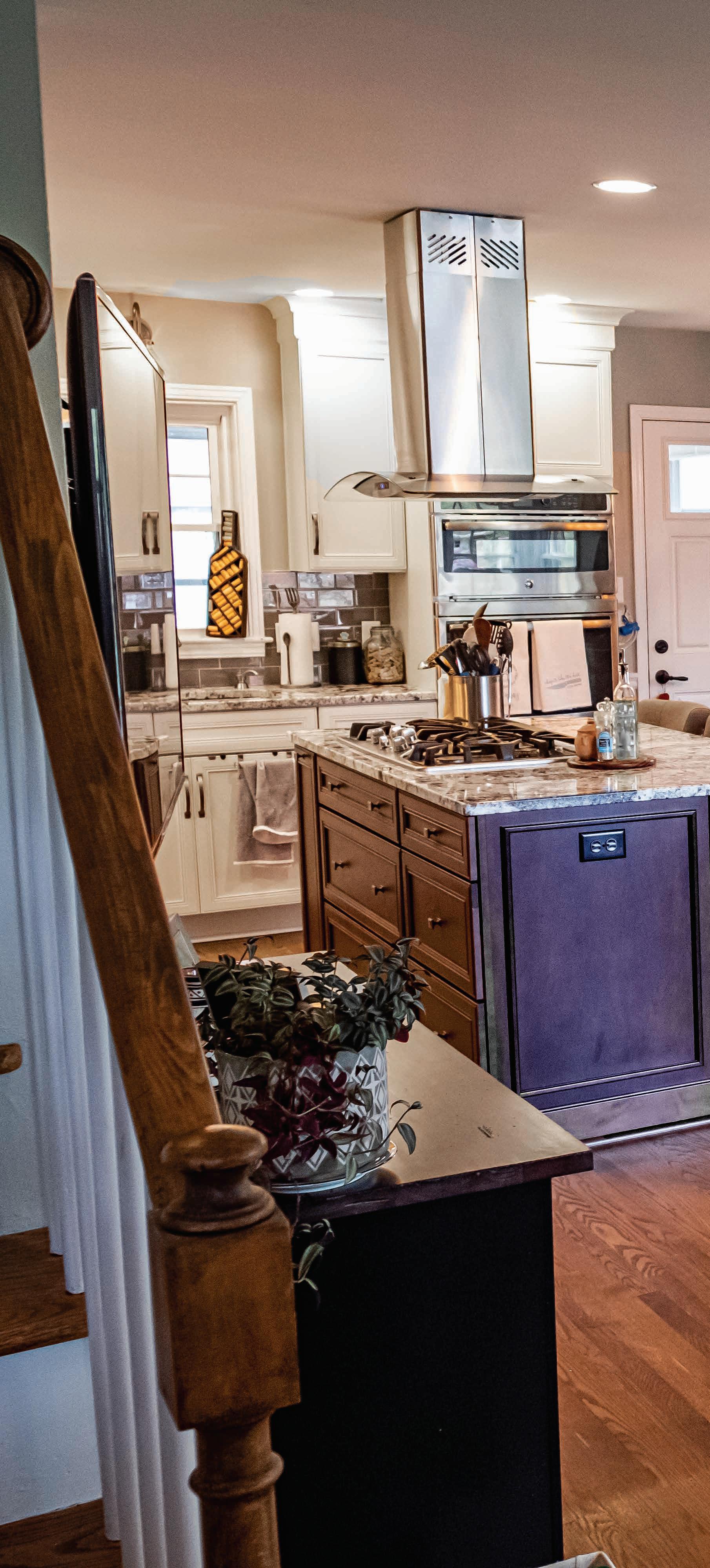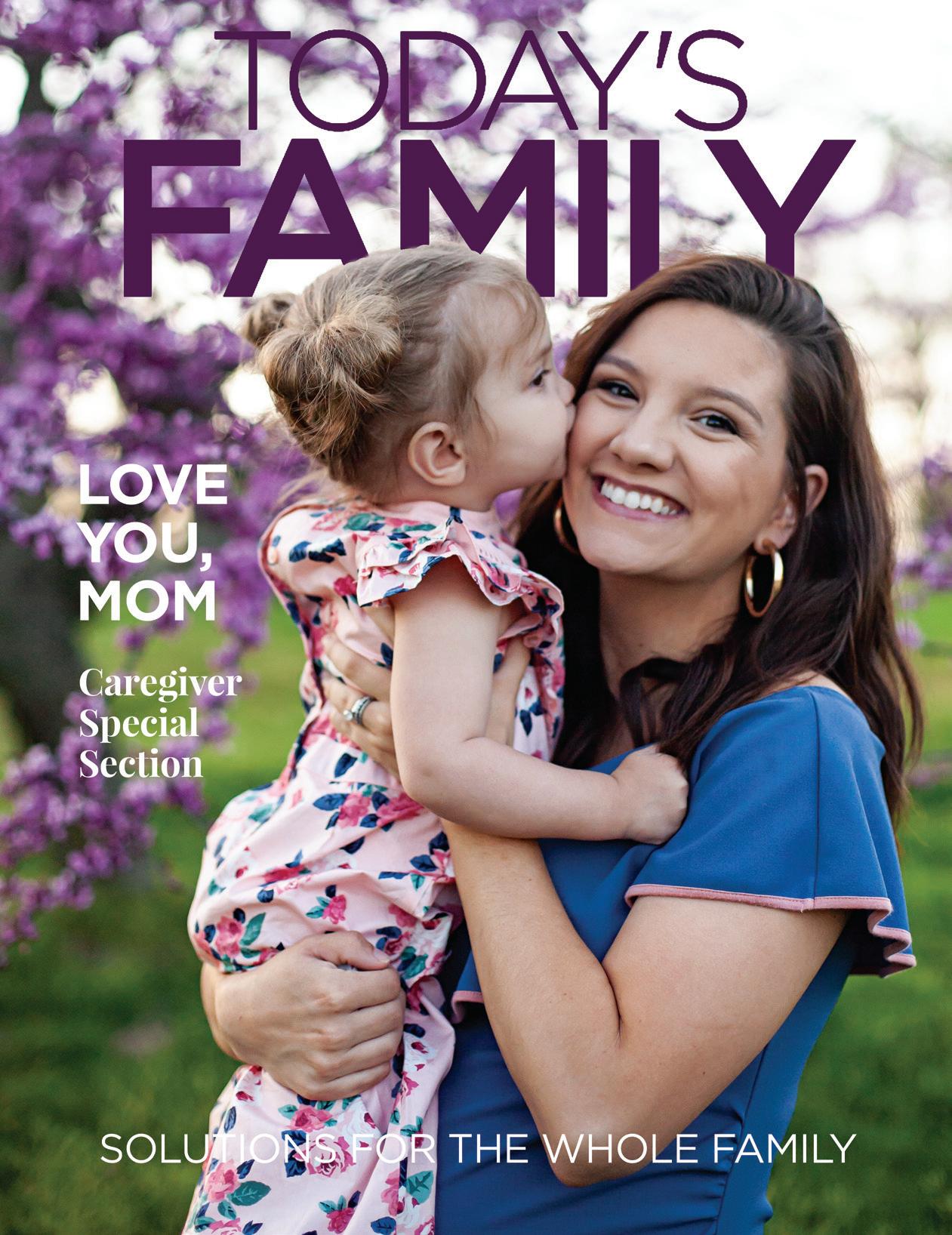
17 minute read
Today’s Family
Like Mother, Like Daughter THE MOTHER-DAUGHTER BOND
By Carrie Vittitoe
There is a special bond between mothers and daughters, whether that relationship is only a few years old or many decades long. These mother-daughter pairs remind us of what makes that connection so unique.
A YOUNG MOTHER/DAUGHTER
Madison Durr and her husband, Dalton, live in Versailles, Kentucky, on a thoroughbred farm, which gives their almost 2-year-old daughter, Sadie Jane, lots of space to run around. “We have plenty of places to roam and explore,” Madison says, adding that there are horses literally in her front yard.
Seeing the world through a young child’s eyes is like seeing it for yourself for the first time, and it does feel magical. “Sadie has made my life so much more fun! Watching her learn and grow every day is, by far, my favorite thing I’ve ever done,” Madison says. 4

Kaneisha Hoosier-Gravell (left) and her sister Keyasia (not pictured) share a love of cooking with their mother Cynthia (right) that goes beyond just the stove or oven. Their creativity comes in not only the preparation of the food but the decorating and display of the food on the table.

Our cover model Madison and her daughter Sadie Jane.
A “MODEL” MOM AND HER DAUGHTERS
Cynthia Hoosier has had a life full of unique experiences. She worked as a model for many years, which allowed her to travel and work for some of the top European fashion designers. A love of travel deepened into an over-three-decade career as a flight attendant for American Airlines. She is also a published author of two books. With all this on her resume and under her belt, she might be an intimidating presence to her two daughters, Kaneisha Hoosier-Gravelle and Keyasia Hoosier. However, they have only ever seen their mother as an inspiration. “I just wanted to be like her,” Kaneisha says. That feeling of pride goes both ways. “As a mother, I am so proud to witness the perseverance of each of my daughters as they continue to grow as young women. My heart is filled with so much pride,” Cynthia says. 3
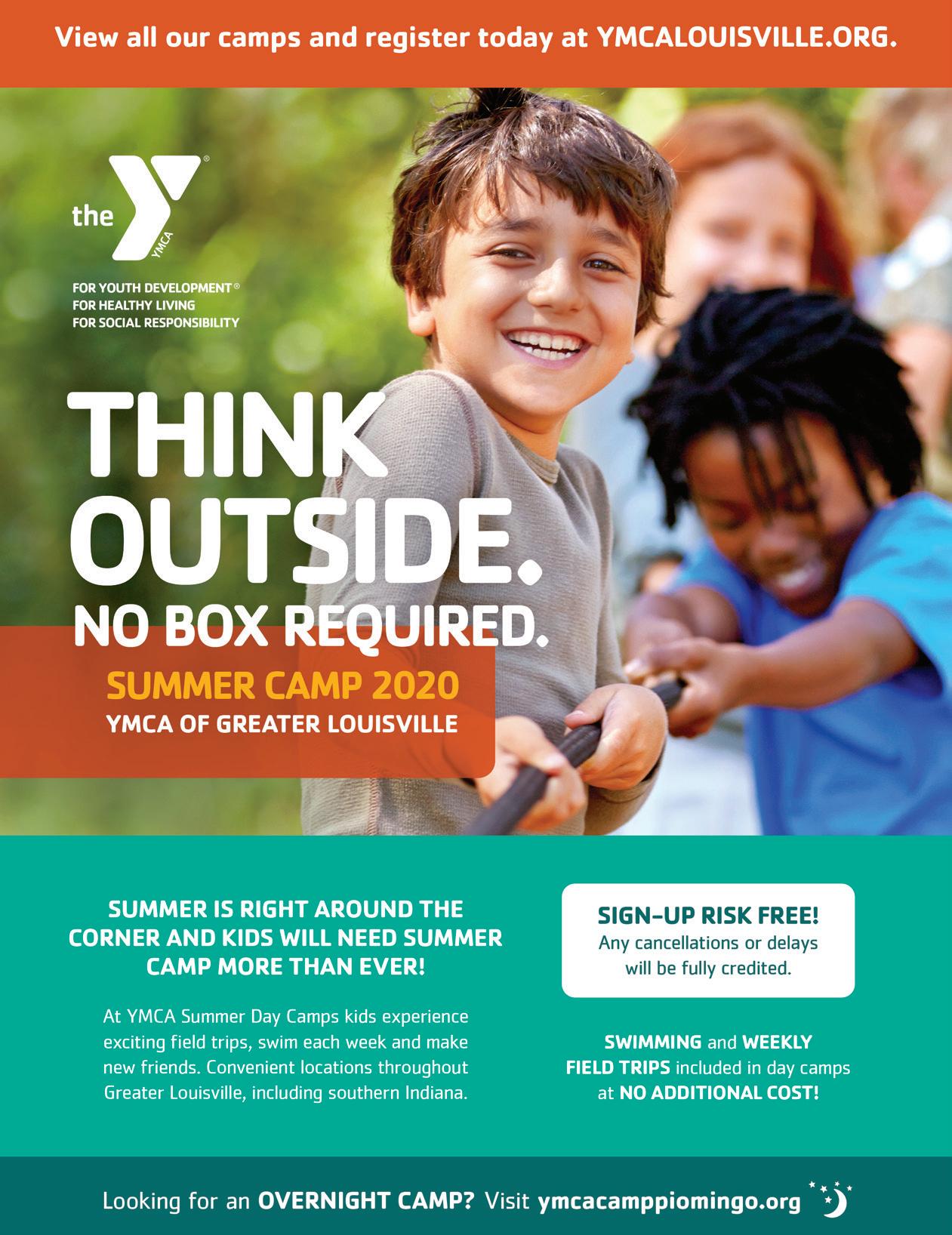
Working together, for some families, could jeopardize their close relationships, but Amanda says she and her mom are committed to keeping work at work. “If [working together] starts to impair our relationship as mother and daughter, we’re not willing to sacrifice that,” Amanda says.

THE MOTHER-DAUGHTER WORK PARTNERSHIP
Jean Schumm, the president and founder of Operation Parent, is the mother of five children and has the opportunity to work with her daughter, Amanda Gale, who is the director of community partnerships at the nonprofit.
Jean founded the organization 14 years ago to support parents as they navigate the sometimes treacherous waters of raising children, especially pre-teens and teenagers. She and her husband faced their own parenting challenges.“The kids we were struggling with? One of them was Amanda,” she says with a laugh.
About three years ago, Jean asked Amanda to join the organization. “I had seen so many miracles at work, and I wanted her to see them,” Jean says. Since joining Operation Parent, Amanda has brought her marketing skills and social media finesse to the office, which is very different from how Jean operates. While Amanda is paperless and likes to work from home, Jean carries a pen and notepad and likes to meet face-to-face with others. “These differences between us have shown us how our organization has to change to connect to today’s young parents,” Jean says. 3

When Denise Richardson thinks about what she wants for her daughters Chelsea and Kenedraa, she says, “I want them to make something of their lives that I wasn’t able to accomplish.” Denise says she had a child at a young age and lost her own mother soon after, which forced her to forge her own path. She is proud of what her daughters have accomplished in their young lives. Chelsea is a student at the University of Louisville and an Army reservist, while Kenedraa attends Jefferson Community and Technical College and models in magazines and fashion shows. 3
We photographed Denise and her daughter Kenedraa Richardson last year at Churchill Downs. Although Denise faced challenges as a young mother, her daughters understand how difficult that experience was for her. “We admire our mom’s strength; she always made sure we had the things we needed to succeed,” they say. For her part, Denise admires her girls’ determination to get through college and accomplish the goals they set for themselves.
THE BASICS OF CARING FOR YOUR KIDS’ TEETH
PROMOTION | By Tiffany White
Being proactive about your child’s dental hygiene at an early age is the key to preventing cavities, says Jenna Schulten, DMD and owner of Dupont Pediatric Dentistry. Based on guidelines from The American Academy of Pediatrics, children should start going to the dentist after their first birthday or first tooth eruption. Afterward, a child should visit the dentist every six months. “We’ve had parents who bring their kids in for their first dental check-up at age 5 or 6. When we take X-rays of their teeth, we find a lot of decay and the parents are shocked,” she says. Dr. Schulten also says parents should limit their child’s snacking to protect their teeth. “Now that everyone is home, it is important to watch for frequent snacking because it can keep food on the teeth longer and makes your child’s caries risk high.” Dr. Schulten gives all patients a caries risk assessment which determines their likelihood for developing cavities. In between dental visits, she suggests using fluoridated toothpaste. “You don’t need to use a lot of toothpaste. Children between the ages of 1 and 2 need a rice-sized amount of toothpaste, and children between the ages of 2 and 5 only need a peasized amount,” she says. When selecting a toothbrush for your child, Dr. Schulten suggests choosing whatever works best for your child — whether it is a mechanical or manual toothbrush. “For younger kids, the head of the toothbrush needs to be smaller to fit in the back of the mouth. You should always use soft bristles to protect the gums.” Do not use mouthwash until your child learns how to spit.
3934 Dutchmans Lane | Louisville, KY 40207 502.897.0625 | dupontpediatricdentistry-louisville.com
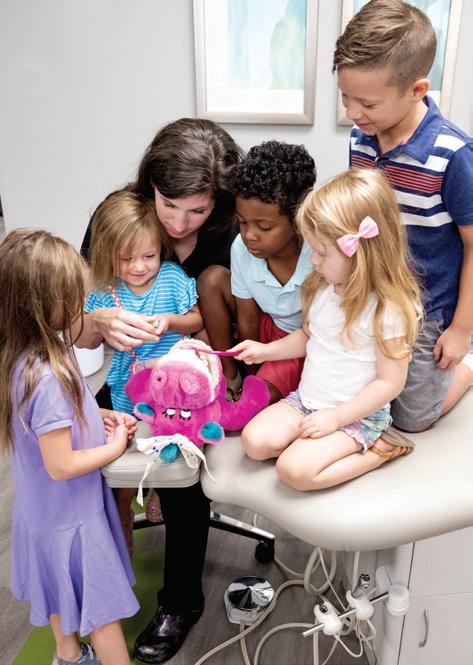


INSPIRING BOOKS
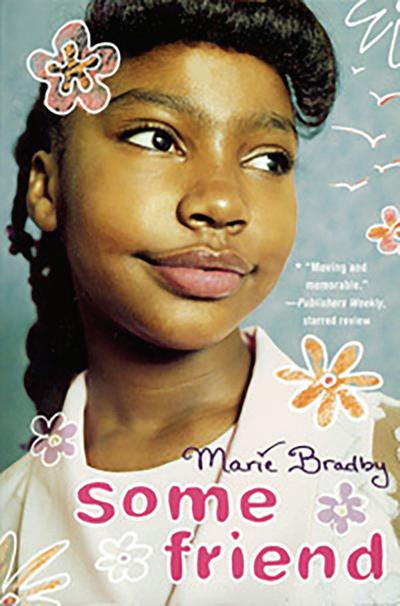
— Marie Bradby, author

IMPORTANT HISTORICAL TOPICS
Marie Bradby, a former full-time journalist, began writing for children after becoming pregnant with her son. “One day I went shopping for books for him before he was born,” she says, “I couldn’t find any books that featured children of color in characters or illustrations.” At this point, Marie decided she would write those books herself. Marie says diversity in childrens’ books “builds empathy, keeps stereotypes from being perpetuated, and exposes children to new and exciting voices.” Marie is an historical fiction writer, covering the 1800s through the 1960s, from times of slavery through the beginning of integration. Throughout her storytelling, she covers a number of heavy issues, although she notes that she uses her characters and their predicaments to keep things light. “There’s a funny side to almost anything,” she says.
Marie has received multiple awards and honors for the following titles, More Than Anything Else; The Longest Wait; Momma, Where Are You From?; Once Upon a Farm; and Some Friend. After Marie’s experience with a girls’ book club at a local elementary school, and learning they were anxious for a follow up to Some Friend, she has been hard at work on its sequel, Some Trip. “I’ve always tried to answer important questions as they relate to children and to address them in an entertaining and informative way that looks at the present and the past.”
BY LOCAL AUTHORS
By Meredith Walston T hese books will inspire your children with stories of regular people turned heroes, positive influences, and cultural diversity, love, and humor.

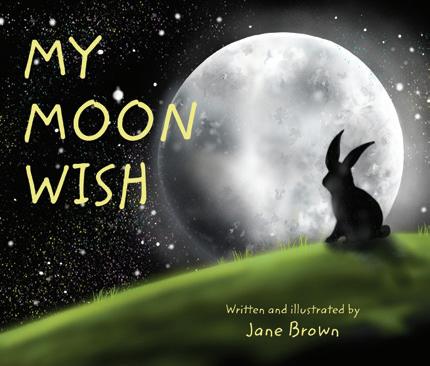
WISHES AND CHARITY
Meet Jane Brown, a first time author, who is using her own personal inspiration to inspire children. Jane, a Louisville resident, was visiting family in England when she received the news that she was becoming a grandmother. That very evening, Jane saw from her window a rabbit in the bright light of a full moon. That sight, she says, is what gave her the idea for her debut work, My Moon Wish. Focusing on the power of children’s wishes, Jane has partnered with the Make-a-Wish foundation, where all proceeds from My Moon Wish are donated to her local chapter of Kentucky, Ohio, and Indiana. Both author and illustrator, Jane, a long-time artist who had primarily worked with colored pencil and ink, used My Moon Wish as a way to expand her artistic technique. In order to attain the more vibrant colors she desired for this book, Jane shares that she taught herself to use Procreate, a digital illustration application on her iPad, for the imagery.
“The whole idea of this first book was to give money to a charity,” Jane says. ”Make-a-Wish fit so well. Why not go to the moon to wish?” My Moon Wish is dedicated to her first grandson, Ollie. Jane is currently in the planning stages for a second book, to be dedicated to her second grandson, George, and hopes to find an equally fitting charity to partner with in the future. “The major part of the book, and Make-a-Wish, has become about taking it into classrooms and teaching children about the power of a wish.” Jane says. “ It is more about philanthropy and giving back.”
DIVERSE POSITIVE CHARACTERS
Tiffany Robinson is using her background in and passion for public health issues to create stories for children, representing families of African descent. A five-time published author, Tiffany has written books for young children focusing on a variety of everyday issues that can affect all families including how to get along with others, understanding those who are differently-abled, various family interactions, and introducing a new baby to the family. “I think it’s important for all kids to see diverse characters and African American families who are positive and living average lives based in present times,” Tiffany says. “That is really important to me.”
Tiffany is in the final stages of her next book, which will center on a mother who has been deployed, leaving a baby at home. Tiffany herself is a military veteran, deployed for several months while her first son was very young. Inspired by her own experiences, she wants to tell a story from the perspective of a mother who is away and the emotional impact that can have on a family, while still keeping the story on a level that is relatable to children.
INSPIRING BOOKS BY LOCAL AUTHORS
EVERYDAY HEROES
Tytianna Nikia Maria Wells, CEO and founder of Honey Tree Publishing, has self published seven books since its creation in 2013. Prompted by a desire for more freedom and control over her work, Honey Tree was formed.
“I have such a strong love and appreciation and respect for stories,” Tytianna says. “I’ve always been intrigued by stories.” Coming from a family of artists and storytellers, she adds, “Storytelling has always been very important in my life growing up.”
Tytianna’s first book, Sweet Pea & Sugar Tea’s Country Family Adventures, turned into a four volume series that she both authored and illustrated. Targeted toward early readers and up, Tytianna notes that “early exposure is important.” With empowering stories of everyday heroes, she writes with a focus on family, identity, history, and community. She used this series to touch on a number of issues including black history, homelessness, adoption, anti-bullying, forgiveness, and hope.
All of Tytianna’s work includes an interactive component. For example, The Bridge Kids: An African Heritage Family Activity Book follows six characters’ daily lives taking place in three cities around the world, including Louisville. With coloring pages, stories, puzzles, and more, she has found a way to engage young readers while they learn about different cultures. Tytianna has also written for more mature readers, including a book of poems entitled The Healing Tree and the award-winning When Hip Hop Met Poetry: An Urban Love Story.
“I learned at a young age to appreciate the power of storytelling, and the power of words,” Tytianna says, “because words are powerful.”

HUMOR AND HEART
Amanda Driscoll is a Louisville native and longtime artist. After becoming a mom, she transitioned from her background and education as an artist and graphic designer, into a successful author and illustrator of children’s picture books. “Picture books are such an important part of the reading process,” Amanda says. “To me, picture books are where the love of reading really begins.”
Currently working on her fourth book, Little Grump Truck, to be released in 2021, Amanda has also written Duncan the Story Dragon, Wally Does Not Want a Haircut, and Klondike, Do Not Eat Those Cupcakes! When asked which of these books has been her favorite, she says, “That would be like picking a favorite child!”
Excited to be writing her first female character in the upcoming Little Grump Truck, Amanda says she tries to keep the themes and emotional impact of her stories universal for all children. “I like the characters to show a range of emotions,” she says. “To have humor and heart. I want to make kids laugh but also want them to have a solid takeaway from the book.”


WHAT SHOULD A CAREGIVER BE DOING?
By Carrie Vittitoe
The decision to hire a caregiver for a loved one might come after long, slow deliberation, or it may need to happen quickly if a loved one experiences an unexpected hospitalization. Either way, families must consider a number of issues to make the best, most informed decisions for their loved ones.
DECIDE WHAT CAREGIVING LOOKS LIKE FOR YOUR SITUATION
Caregiving is a huge umbrella term that means different things to different people. Elisabeth Knight, clinical manager at Caring Excellence At Home, says, “What we normally recommend is asking what caregiving looks like, due to the fact that there is such a wide range of services and needs that can be provided.” For some people, caregiving is mostly companionship, while for others, caregiving means helping manage a health issue such as diabetes or stoma care. It is important for families to have an idea of what needs they think their loved one has prior to contacting a company or home health care agency. EXPECT AN ASSESSMENT AND A CARE PLAN
Most reputable home health companies will perform an assessment of the patient to determine what needs he or she has and then provide a care plan that details what caregiving will specifically look like. “Having some sort of a written contract is a good idea,” Elisabeth says. “It eliminates possible confusion. When a caregiver is supported and knows what their expectations are, they provide the best level of care.” A care plan not only protects the client, ensuring that caregiving requirements are spelled out, it also protects the caregiver from being tasked with services that are beyond his or her scope. CARE PLANS CAN CHANGE
Elisabeth says it is common for care plans to change. Sometimes this happens because a loved one isn’t keen on bringing a caregiver into the home so the family opts for care to be minimal at first. It often happens that once a caregiver develops a relationship with the client and provides care, the loved one realizes how beneficial it is, which means the care plan is expanded to include other duties. “I think you can almost guarantee that if somebody has had a trip to the hospital, they’re going to need an updated care plan when they get home,” she says. ASK WHAT IS NOT ALLOWED
Families that are considering hiring a caregiver should ask what the caregivers cannot do or are not allowed to do. “We explain to our caregivers that we do not want them to do anything that is out of their skills of practice,”
Elisabeth says. A caregiver who doesn’t feel comfortable transferring a patient from bed to wheelchair, for example, shouldn’t do it, both for their own safety and the client’s. When it comes to money and medicine, some companies have specific rules. “We don’t allow our caregivers to assist with writing checks or finances. Our caregivers are not allowed to fill medication planners,”
Elisabeth says.
WHETHER TO HIRE AN INDIVIDUAL
OR A COMPANY
Some families may opt to hire a company that provides caregiving, while other families may use an individual who is not affiliated with an agency. While hiring an individual might be less expensive than hiring a company, working with a caregiving company means the caregiver will be overseen by someone besides the family, which could be reassuring and worth the extra cost.
Families that hire individuals need to ask questions about liability protection and insurance to ensure their assets are protected should an accident occur. No matter what type of caregiver a family hires, Elisabeth urges them to get references. CAREGIVING CHARACTER VERSUS EXPERIENCE
“Oftentimes, people look at somebody who has five years, 10 years of experience as a caregiver and think that automatically means they are a good fit for their family member. In our opinion, hiring for character and somebody who enjoys helping others is something that is much more important,” Elisabeth says. Just because a caregiver only has a year of professional experience may not mean much in terms of the quality of care they provide. Sometimes the best caregivers are the ones who have provided care to their own family members. “I can train somebody how to do the work, but I can’t train somebody to have a heart to do this work,” she says.
HAVE AN IDEA OF WHAT SPECIFIC NEEDS YOUR LOVED ONE HAS PRIOR TO YOUR CAREGIVER SEARCH.

“Hiring for character and somebody who enjoys helping others is something that is much more important” than years of caregiving experience.
Questions to Ask A Potential Caregiver
Debbie Tuggle, a retired clinical nurse specialist who has been a caregiver for various family members, offers some questions she recommends that families ask if they opt to hire a caregiver privately.
Are you willing and able to transport my loved one?
Make sure to verify that they have a valid driver’s license and insurance and check for any DUIs.
Are you willing and able to do personal care?
Some caregivers may be comfortable with bathing and dressing but cannot handle toileting.
Are you willing to provide
nutrition? Is the caregiver going to cook for and feed your loved one?
Are you willing and able to provide exercise safely?
A bedbound loved one still needs range-of-motion exercises.
If there are pets, are you willing to care for them?
Debbie says it is important to ask specific questions about a caregiver’s training, such as where he or she received training and asking to see the certificates themselves. However, she also advises families to be fully aware and appreciative of the professional skills of the person they hire. “If you’ve requested a nurse, don’t expect them to do laundry and dishes,” she says. Finally, Debbie says families should be “firm but kind” and avoid becoming chummy with a caregiver. The relationship between the employer and the employee should always remain professional to protect everyone.


